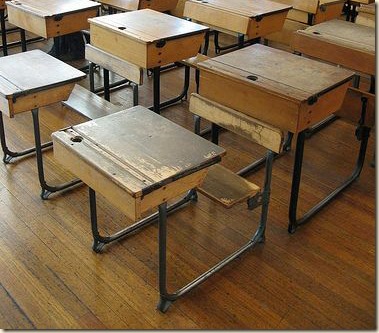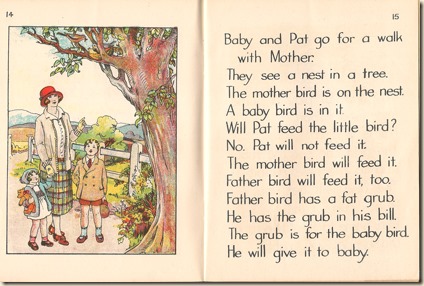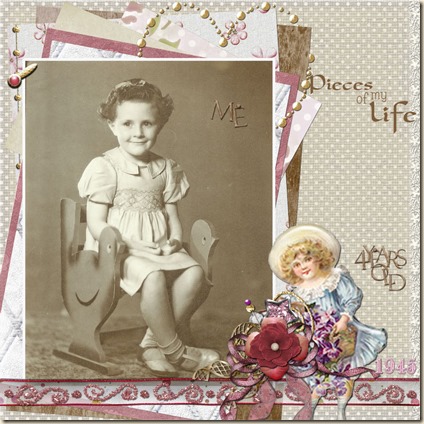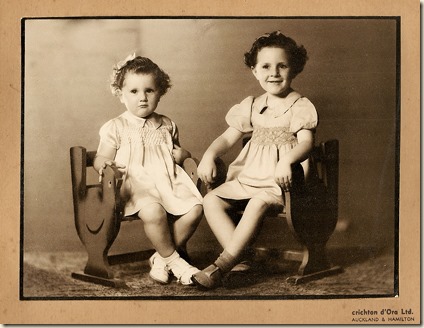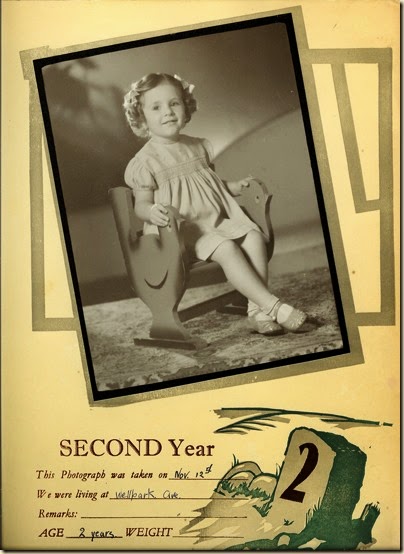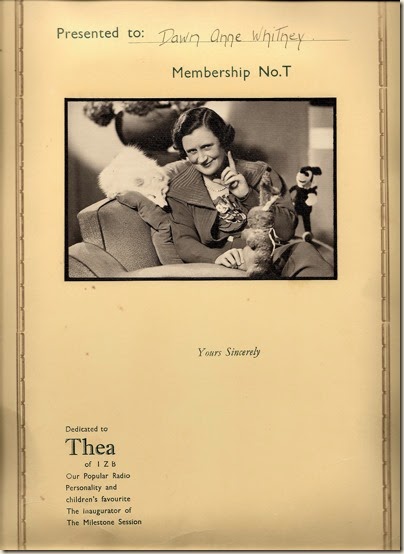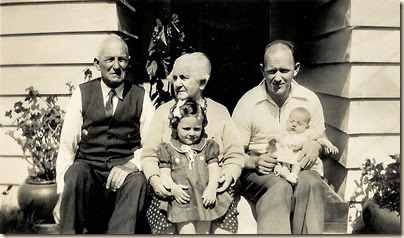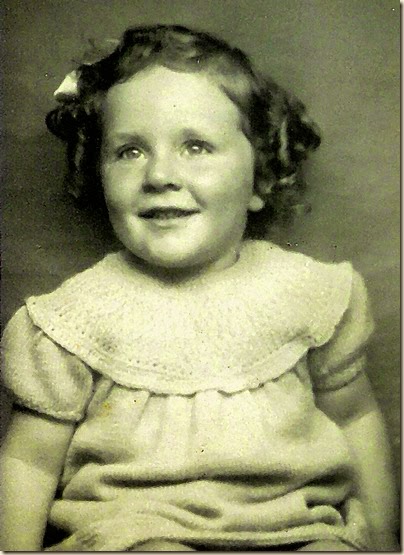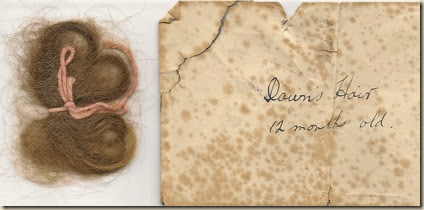December 1948 aged 8 and looking even more grown up!
What can I remember about 1949? I would have said absolutely nothing but I’m sure I’ll be able to dredge up something from the depths! It’s been over two years since my last post, time is getting on and I’d like to get to 1963 before it’s too late, so where to start?
Perhaps with the fair isle jumper I’m wearing. Hand knitted by my mother and worn with extreme pride by me, it was all the rage and even now I still see them in the op-shops so maybe still fairly popular.
A 1949 knitting magazine with a lovely fair isle pattern, I would have given my teddy bear to have a beret like that. Next to that is a photo of Ursula Margaret Black (née Flaws) better known to me as Aunty Ottie, she was born in 1897 in Lerwick in the Shetland Islands off the coast of Scotland. One of the Shetland Islands is called Fair Isle and that is where the knitting style first originated. Aunty Ottie was a dab hand at it and I remember being absolutely fascinated watching her knitting, she had a padded leather pouch (makkin) tied around her waist with lots of small holes in it and she would sit the end of the knitting needles in it and away her fingers would fly, like this:-
The following I vaguely remember from 1950:-
British Empire Games come to Auckland
These were the first Empire Games (the forerunner to the Commonwealth Games) held since the Second World War. The main venue was Eden Park, which usually hosted rugby and cricket matches. The closing ceremony was held at Western Springs Stadium and the rowing regatta at Lake Karapiro in Waikato, 150 km away.
Over the course of the week a total of 250,000 spectators watched athletes from 12 countries compete. New Zealand's 175-strong team finished third on the medal table with a total of 54 medals, its second-best return at any Empire, Commonwealth or Olympic Games (after the 1990 Commonwealth Games haul of 58 medals, again at Auckland).
I don't remember going to any of the events which is strange because Western Springs Stadium was just around the corner from where I lived and Eden Park was not that far away. Probably because I don’t think my parents were into sports that much. I do remember going to a rugby game at Eden Park once with my father, I asked so many questions about the game that I was never invited again!
The post-war ‘baby boom’ was the main contributor to a population increase of nearly 400,000 during the 1950s. But it was an immigrant on the Captain Hobson who in September 1952 officially took New Zealand’s population past the two million mark. More than 125,000 migrants settled here during the decade, the vast majority of them British.
Other events in 1950:
In June the government ended petrol and butter rationing, finally lifting restrictions introduced during the Second World War.
TEAL (Tasman Empire Airways Ltd) launched a new flying boat service carrying 27 passengers between Evans Bay, Wellington, and Sydney. TEAL had been operating Solent flying boats between Sydney and Mechanics Bay, Auckland, since 1940.
The death in December of wartime Labour Prime Minister Peter Fraser symbolised the end of an era that had been dominated by the Depression and the Second World War.
During the 1950s Kiwis spent pounds, shillings and pence (£ s d). Imperial currency was complex: pounds were divided into 20 shillings, and there were 12 pence to the shilling.
The big-ticket household items in the fifties were washing machines and refrigerators. Yet even by 1959 only 54% of dwellings had the sole or shared use of a refrigerator, while 57% had the sole or shared use of a washing machine. Those without such mod cons relied on ‘boiling the copper’ to do their laundry and stored perishables like meat in a food safe, a box with a netting side through which fresh air circulated. At the end of the decade 14% of New Zealand dwellings still lacked piped water and 19% did not have a flush toilet.
It was about this time that I remember Dad installing our toilet inside instead of us having to go out the back door to the toilet which was part of the house but with the door outside! Our old toilet was flushable where we used to 'pull the chain' to flush the water in the cistern which was up near the ceiling, it looked a bit like this one but I don't remember ours being quite so flash. The new one had a push button flush, luxury!
I also remember we had a non-electric fridge (maybe even an Ice Box) in my early years, each week the iceman would deliver a HUGE block of ice, slung over his back on a big hook, that would sit at the back/on top of the fridge and over the week it would slowly melt, don’t ask me how it worked, I have no idea.
We also had a washing machine with a wringer, every Saturday morning without fail it was my turn to either put the clothes through the wringer or hang them on the line. Come to think of it I think at 8 and 9 I would have been a bit too short to reach the clothesline so I was probably stuck doing the wringing! I do recall we had a long line stretched between the house and the garage out the back and a long two pronged wooden pole to prop the line up so maybe it did hang down low enough for me to hang the clothes up.
--------------------------------------------------------------------------------------






